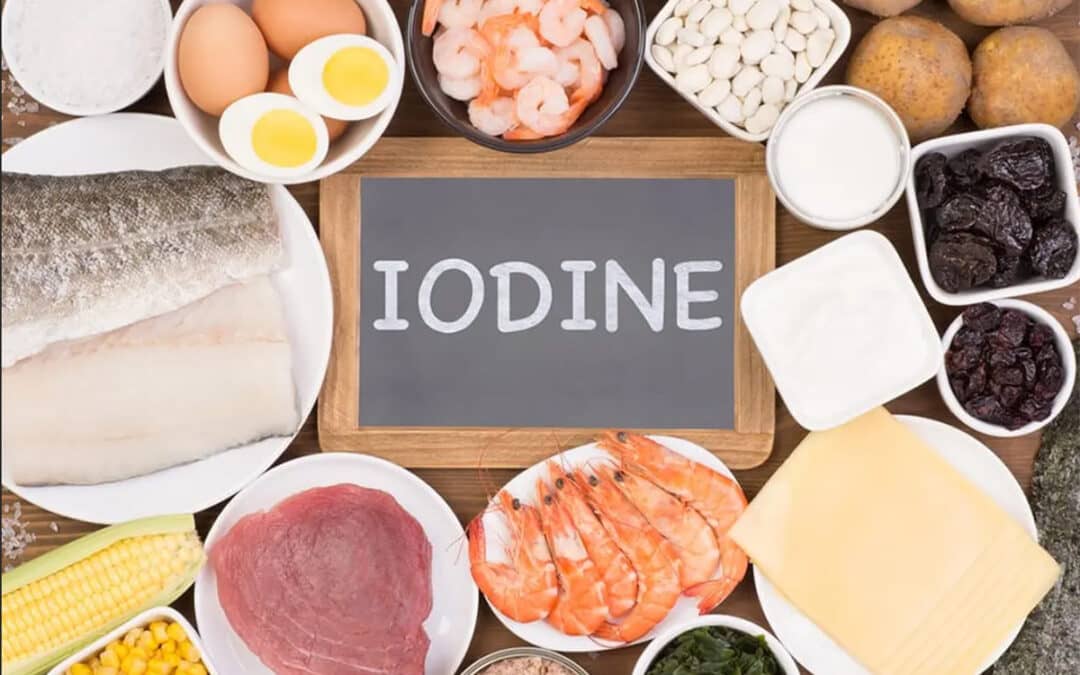Iodine allergies are a rare phenomenon, but they can be confusing for individuals who have experienced reactions after exposure to iodine-rich substances. In this article, we will explore the causes, symptoms, and potential treatments for iodine allergies, as well as how to manage them effectively.
What Is Iodine and How Does It Affect the Body?
Iodine is an important element found in the body, mostly in the thyroid gland, where it helps make hormones that control things like how our body uses energy. While iodine is necessary for good health, some people might have allergic reactions to it. However, true iodine allergies are very rare, and many reactions people think are caused by iodine are actually due to other things, like proteins found in shellfish.
Learn more about the Role of Iodine in Your Health from trusted medical resources.
Symptoms of Iodine Allergies
Iodine allergies can cause a variety of symptoms, ranging from mild to severe. The most common symptoms include:
-
Skin Irritation: Redness, rashes, or hives may develop after contact with iodine-containing products.
-
Respiratory Issues: Shortness of breath or wheezing could occur, particularly when exposed to iodine in the form of contrast dye for medical tests.
-
Digestive Disturbances: Nausea, vomiting, and diarrhea are also common reactions to iodine in food or medications.
-
Severe Reactions: In rare cases, iodine allergies may cause anaphylaxis, a life-threatening allergic reaction that requires immediate medical attention.
If you suspect you are having an allergic reaction to iodine, it is critical to seek professional medical advice to determine the exact cause.
Foods That Contain Iodine
Many foods naturally contain iodine, especially those from marine sources. Common examples include:
-
Seafood: Fish and shellfish are rich in iodine, but it’s often the proteins in these foods that cause allergic reactions, not iodine itself.
-
Dairy Products: Milk, cheese, and yogurt contain trace amounts of iodine.
-
Eggs: Particularly the yolks, which can also contain small amounts of iodine.
-
Fruits and Vegetables: Some produce can absorb iodine from the soil, but the amounts are usually minimal.
It is important to differentiate between allergies to iodine and reactions to the proteins found in seafood. If you have an allergy to seafood, it’s more likely caused by proteins like tropomyosin and not iodine. To manage such allergies, avoid the specific foods that trigger your symptoms and consult with an allergist for proper testing.
Iodine in Medicine: Risks and Reactions
Iodine is widely used in medicine, particularly in contrast dyes for imaging tests such as X-rays and CT scans. While a reaction to iodine-based contrast dye is not necessarily a true iodine allergy, it can cause symptoms such as nausea, dizziness, and skin irritation.
People with seafood allergies are sometimes concerned about reactions to iodine contrast dyes. However, studies suggest that the risk of an allergic reaction to contrast dye is not significantly higher in individuals with seafood allergies. Only about 3% of people with a seafood allergy will experience a reaction to iodine-based contrast dyes.
Topical iodine in products like Betadine (used in surgeries and wound care) can also cause allergic reactions. In these cases, the allergic reaction is usually to povidone (the polymer in Betadine) rather than iodine itself. If you have a reaction to Betadine, consult with your doctor to determine if povidone is the cause.
Managing Iodine Allergies
If you suspect you have an iodine allergy, it’s important to take the following steps:
-
Consult an Allergist: An allergist can perform tests to identify whether you have an iodine allergy or if another substance is triggering your symptoms. Skin tests and blood tests can be used to detect specific allergens.
-
Avoid Iodine-Rich Foods: If you are allergic to iodine, your doctor may recommend avoiding foods rich in iodine, such as seafood and dairy products.
-
Use Non-Iodine Contrast Dyes: If you need a medical imaging procedure, inform your doctor of your iodine allergy. Non-iodine contrast dyes are available for individuals who cannot tolerate iodine.
-
Carry Antihistamines: If you experience mild reactions, antihistamines can help reduce symptoms like itching and swelling.
-
Wear Protective Gear: If iodine-based products are used in your medical treatments, such as Betadine, ensure that they are applied in a controlled manner to prevent skin irritation.
Iodine Allergy Testing
To confirm an iodine allergy, your doctor will likely perform skin tests or blood tests to determine if you are sensitive to iodine or its derivatives. Allergy testing is crucial to differentiate between true iodine allergies and other sensitivities.
If you experience symptoms of an iodine allergy, consult your healthcare provider immediately. They will help you understand the root cause of your symptoms and guide you on appropriate treatment options.
Summary
While iodine allergies are rare, they can still cause significant discomfort and even lead to severe reactions. Iodine is an essential element in the body, but its presence in foods and medications can sometimes trigger allergic responses in sensitive individuals. By understanding the symptoms, causes, and treatment options, you can manage iodine sensitivities effectively.
Remember to consult a healthcare professional to properly diagnose and manage your iodine allergy. Whether the reaction is to iodine itself or to other substances such as proteins in seafood, knowing exactly what you are allergic to will help you avoid triggers and live a healthier, allergy-free life.

